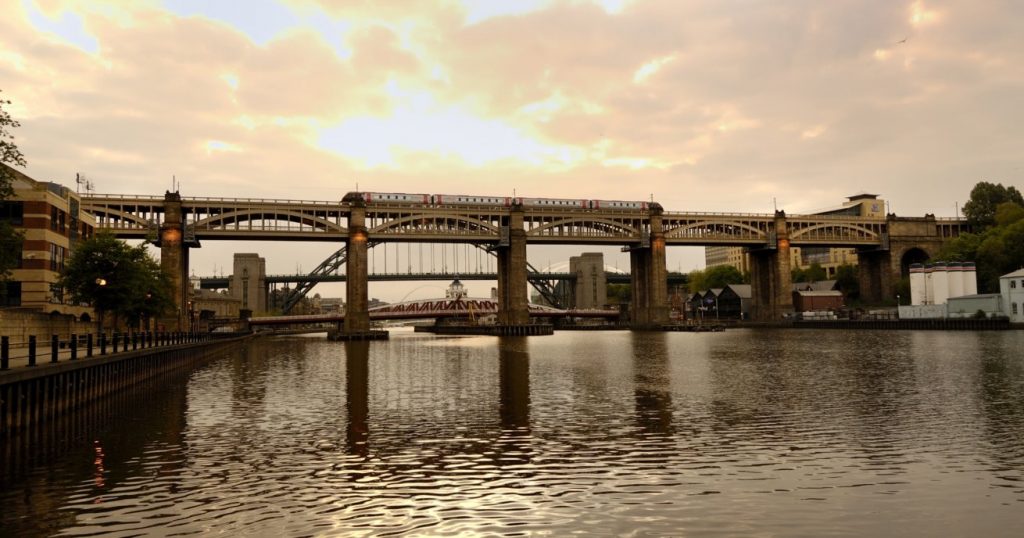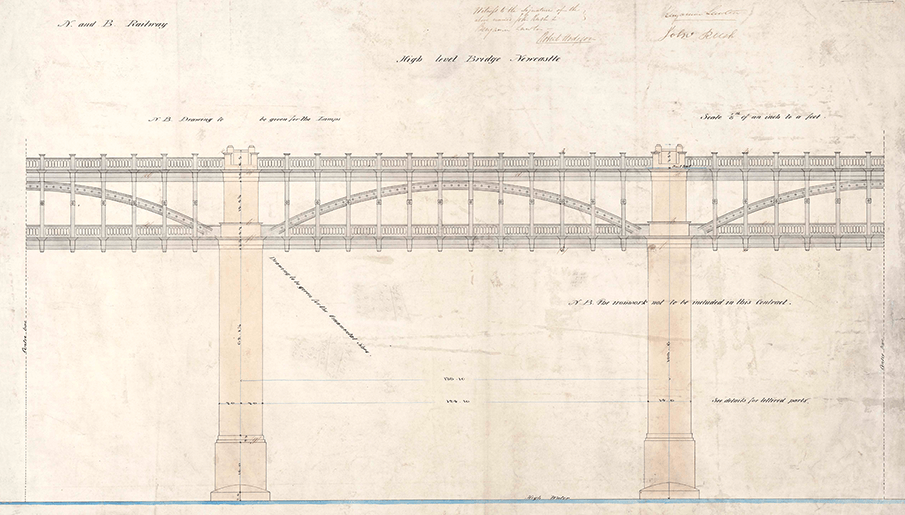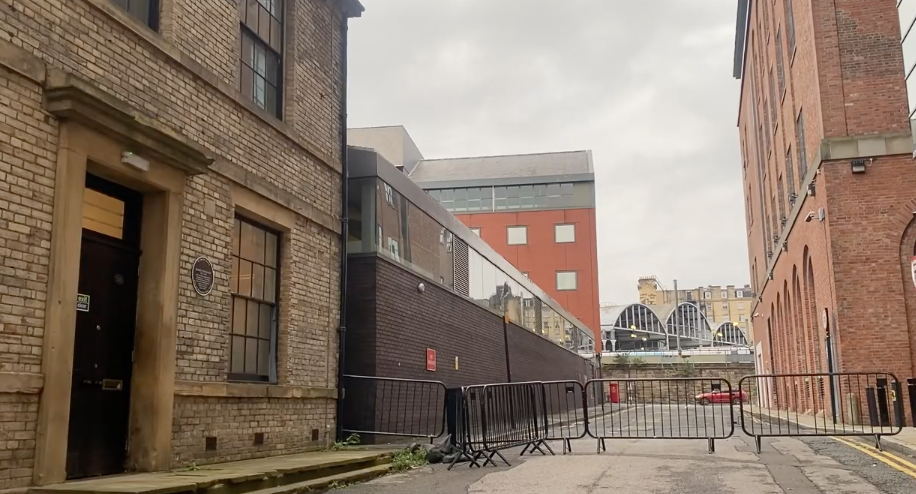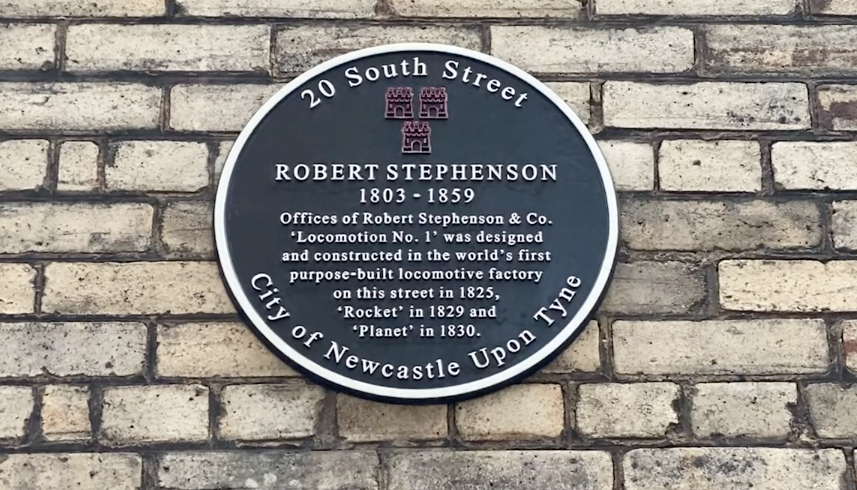Historian Tim Dunn has returned for a third series of The Architecture the Railways Built on Yesterday – and filmed some exclusive bonus footage …
Tim took a trip back to Newcastle – one of the world’s most important cities for railway heritage – to find out more about its story.
In this video, he tells us about the Stephensons’ works right near Newcastle Central station and talks to Vicky Stretch, our archivist, about Newcastle’s famous High Level Bridge, which appears in episode one:
Go behind the scenes of The Architecture the Railways Built, inside the water tower at Newcastle Central that replenished the locos with water:
Pioneering structure
Opened in 1849, the High Level Bridge at Newcastle was part of the objective to create a continuous line from London to Edinburgh.
Robert Stephenson designed the bridge to carry the railway above, rather than beside the road for the first time – a concept that would save space and money.
The roadway was built at 96ft (29m) and the railway 120ft (37m) above high water on the river to enable a level line for the railway across the deep and wide Tyne valley.

King Edward VII opened the King Edward railway bridge nearby in 1906, which provided a shorter route into Newcastle station. Today, the High Level Bridge is used as a turning loop on the East Coast Mainline, which runs north from London King’s Cross station.
Conservation
We extensively refurbished the bridge between 2001 and 2008, strengthening the structure and restoringsome if its original features.
The project received prestigious awards, including the 2009 Grand Prize for Conservation from Europa Nostra, for its research into the use of cast iron and the conservation techniques it used.
Original drawings
You’ll see fantastic original drawings of the High Level Bridge in the video above. Our archive holds a huge number of historic drawings, plans, title deeds and handwritten notes that tell an amazing story of the railway.
In 2018, the archive contributed a drawing of the High Level Bridge to an online archive curated for the Great Exhibition of the North.
The exhibition celebrated the region’s pioneering spirit and includes exhibits, live performances and artwork. It also included the History of the North in 100 Archives, an online exhibit featuring telling the story of the North in 100 selected items.
The original Rocket locomotive designed by George Stephenson, which made passenger trains possible, also featured in the Great Exhibition of the North.

The Rocket and the Forth Street works

Right beside Newcastle Central station is the site of the Stephensons’ railway works, on Forth Street.
It’s perhaps most famous as the works where Robert Stephenson and Company made the Rocket in 1829, according to the National Railway Museum.
The Rocket won the Rainhill Trials that year, making it the fastest locomotive to be built up until then.
The Rainhill Trails, held by the first mainline railway in the world – the Liverpool and Manchester Railway – to find more efficient locomotion.
Today, a plaque marks the site of the offices of Robert Stephenson and Company’s Forth Street works – at 20 South Street.
It reads: “Offices of Robert Stephenson & Co. ‘Locomotion No. 1’ was designed and constructed in the world’s first purpose-built locomotive factory on this street in 1825, ‘Rocket’ in 1829 and ‘Planet’ in 1830.

Read more:
The Architecture the Railways Built – interview with presenter Tim Dunn
Film: Discover the Network Rail archive
Incredible Stephenson railway history rediscovered
The Architecture the Railways Built – Royal Albert Bridge
The Architecture the Railways Built – Huddersfield station
The Architecture the Railways Built – Severn Bridge Junction
The Architecture the Railways Built – Barmouth Viaduct
The Architecture the Railways Built – London St Pancras International



